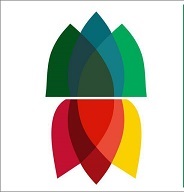Address: Sultan Ahmet, Ayasofya Meydanı No:1, 34122 Fatih/İstanbul
ONCE A CHURCH, LATER A MOSQUE.
Masterpiece Of The History Of Architecture:
Hagia Sophia Istanbul (Ayasofya in Turkish) can be considered as the best and the most visited sights in Istanbul together with the neighboring Topkapi Palace. Hagia Sophia is a former church and museum and declared as one of the world’s greatest architectural works and accepted as the 8th wonder of the world.
Built as a church in 325, Hagia Sophia Istanbul was rebuilt in 537 and was converted into a mosque by Fatih Sultan Mehmet after the conquest of Istanbul in 1453.
Serving as a museum since 1935, a decree on 10th of July 2020 to formally declare the Hagia Sophia Istanbul as a mosque, after Turkey’s administrative court annulled a 1934-dated decision that paved the way for the use of Hagia Sophia as a museum.
Hagia Sophia Istanbul Facts
Istanbul’s, as well as the World’s one of most visited sights. So what lies behind?
- The name “Hagia Sophia” means “Holly Wisdom” in Greek.
- First built in 325 AD, collapsed 2 times and rebuilt 3 times.
- Built in the year 532 AD, as the world’s largest place of worship.
- Converted to a mosque after Ottoman Empire’s conquest of Istanbul in 1453.
- Converted to a museum in 1935.
- A decree on 10th of July 2020 to formally declare the Hagia Sophia as a mosque.
- Declared as one of the world’s greatest architectural works.
- Accepted as the 8th wonder of the world.
History of Hagia Sophia Istanbul
Hagia Sophia’s current building is the third construction and has different architectural style due to the rulers of the city.
NON-MUSLIM TOURIST VISITING ETIQUETTE FOR HAGIA SOPHIA


All visitors, Muslims and non-Muslims are allowed to enter Hagia Sophia Mosque. Visitors should remove their shoes before stepping onto the mosque’s carpets. Avoid visiting Hagia Sophia Mosque at prayer times (five times a day), especially noon praying on Fridays. Women should wear a head covering when entering to the Hagia Sophia Istanbul. Headscarves are available at the Hagia Sophia Mosque entrance without a fee. Photography is allowed, however do not take pictures of people who are in the mosque to pray. Stay silent during your visit, dont run and stand in front of anyone praying. There is no entrance fee to visit Hagia Sophia Mosque, but donations are welcome.
Roman & Byzantium Period
Hagia Sophia was first constructed in 325 for the great wish and will of the Emperor Constantine to move the capital of the Roman Empire to Istanbul.
After a big earthquake in 360, the construction restored by the Emperor Constantine and called as “the Big Church (Megale Ekklesia)”.
Until the period of Byzantium Emperor Justinianos (527-565), the building had many damages due to rebellions and big fires and so restored again and again.
And finally it is reconstructed in 5 years with the administration of the famous architects Anthemios (Tralles) and Isidoros (Miletus) under the order of the Emperor Justinianos.
Hagia Sophia Istanbul has been the biggest church and constructed by the East Roman Empire and was used as a church for 916 years, as well as the place in which the emperors were crowned, until the Ottoman Empire’s conquest of Istanbul in 1453, by Fatih Sultan Mehmed.
Ottoman’s Period
After the conquest of Istanbul, Fatih Sultan Mehmed was converted the church into a mosque. Hagia Sophia than was used as a mosque for 482 years.
During the Ottoman Empire, the sultans gave Hagia Sophia a special value. Every effort has been made to protect and sustain Hagia Sophia, the symbol of the conquest.
Ayasofya Mosque Foundation was established by Fatih Sultan Mehmet.
The first minaret, pulpit and altar of Hagia Sophia was built with order of Fatih Sultan Mehmed. He also added a madrasah and library to the place where the building is located.
Sultan Beyazit II (1481-1512) added a mihrab of white marble and a minaret in the northeast corner.
Sultan Suleiman the Magnificent (1520-1566) presented the two lamps he brought from Hungary to Hagia Sophia.
During the period of Sultan Selim II (1566-1574), external retaining structures were added and strengthened by the famous Ottoman Architect Sinan to strengthen Hagia Sophia.
Sinan also made the dome extremely durable by feeding the gaps between the piers carrying the dome of Hagia Sophia and the side walls with arches.
Period of the Turkish Republic
After the establishment of the Republic of Turkey, Hagia Sophia was closed due to restoration work between 1930-1935.
In 1935, with the order of Ataturk, the founder of the Turkish Republic, and the decision of the Council of Ministers, Hagia Sophia was converted into a museum.
Hagia Sophia declared as UNESCO World Heritage Site in 1985.
The part of the Hagia Sophia (named Hunkar Pavilion) was opened for prayers for the first time in October 2016, by the Presidency of Religious Affairs.
Finally a decree on 10th of July 2020 to formally declare the Hagia Sophia as a mosque, after Turkey’s administrative court annulled a 1934-dated decision that paved the way for the use of Hagia Sophia as a museum.
First prayer was held in Friday 24, July 2020.
What to See at Hagia Sophia
on the Exterior
You’ll see;
- Sultan Tombs,
- Elementary School,
- Fountain,
- Timing Room,
- Public Fountains,
- Minarets,
- Buttresses,
- Treasury Building (Skevophylakion),
- Almshouse.
on the Interior
It’s like stepping into the holy world of Christianity and Islam, merged on the shell-like apse and under an impressive dome, in a mysterious and mystical ambiance, and a wide range of architectural and art works coming from thousands of years.
Such as the golden Christian mosaics and colorful frescoes from the Byzantine era. Hagia Sophia’s mosaics depict the Christian scenes.
The golden Christian mosaics we mention above are probably from the 10th century, and other famous one depicts Jesus and the Virgin Mary.
You’ll see and admire;
- An impressive Dome,
- Mosaics,
- Calligraphic Panes,
- Tiles,
- Altar,
- Minbar,
- Sultan’s Loge, Muezzin’s Loge,
- Omphalion,
- The Library of Sultan Mahmud I,
- Private Sections (“Maksure”),
- Marble Cubes,
- Wishing Column,
- Gravestone of Commandant Enrico Dandolo,
- Viking scripture,
- Doors of Hagia Sophia.
Hagia Sophia entrance fee :
- Refrence :
- TRT TV for Video
- hurriyetdailynews for Photo

